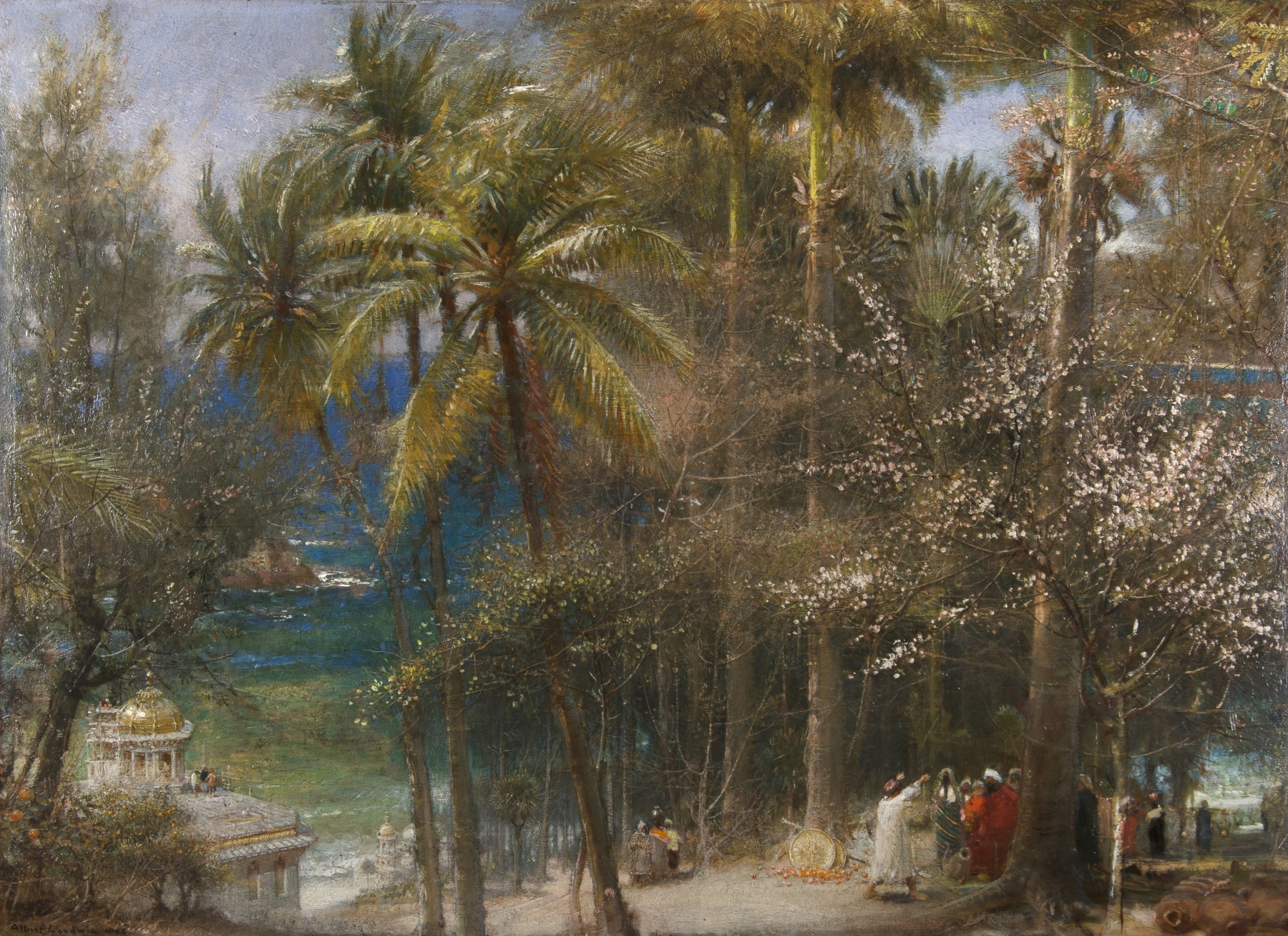
(click image to enlarge)
While always injecting his topographical landscapes with a great degree of poetry, Albert Goodwin also created imaginative landscapes inspired by his reading. Having had only a basic schooling, he developed a love for classic texts that were popular in his day, and notably the Bible, The Pilgrim’s Progress, Robinson Crusoe and The Arabian Nights, including the voyages of Sinbad the Sailor. It is the last that provided the source of the present work, though the exotic flora and architecture are based on the artist’s own ‘voyages’.
On his sixth voyage, Sinbad (or Sindbad) is shipwrecked, loses his companions to starvation, and builds a raft. As a result, he arrives alone in the kingdom of ‘Serendib’, the Arabic word for Ceylon (now Sri Lanka). There he entertains first its people and then its king with stories of his travels, and is treated by the king as an honoured guest. Eventually, however, he asks permission to return home. Though initially reluctant, the king accepts and bestows on him a number of gifts, including a cup carved from a single ruby to present to the Caliph of Baghdad. Once home, he similarly seduces the Caliph with his stories.
Goodwin shows Sinbad telling his story to the people of Serendib. The grove in which they stand comprises trees that the artist would have seen on his wide-ranging travels from Egypt to the West Indies. However, the building at the left is specifically that of the Jasmine Tower at Agra Fort, of which he made a drawing, probably on his visit to India in 1895. That drawing also provided the basis for a more topographical painting made in 1918.